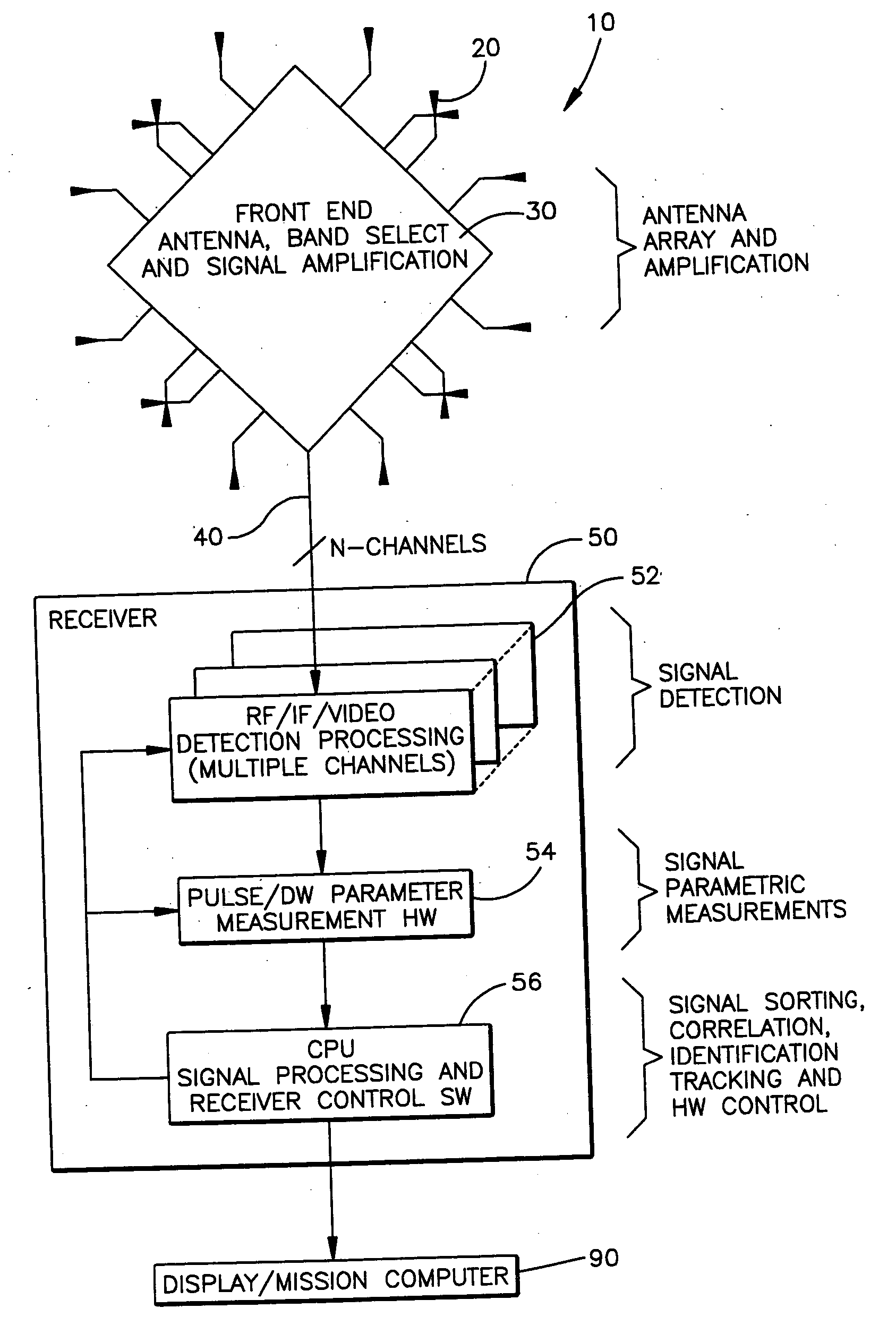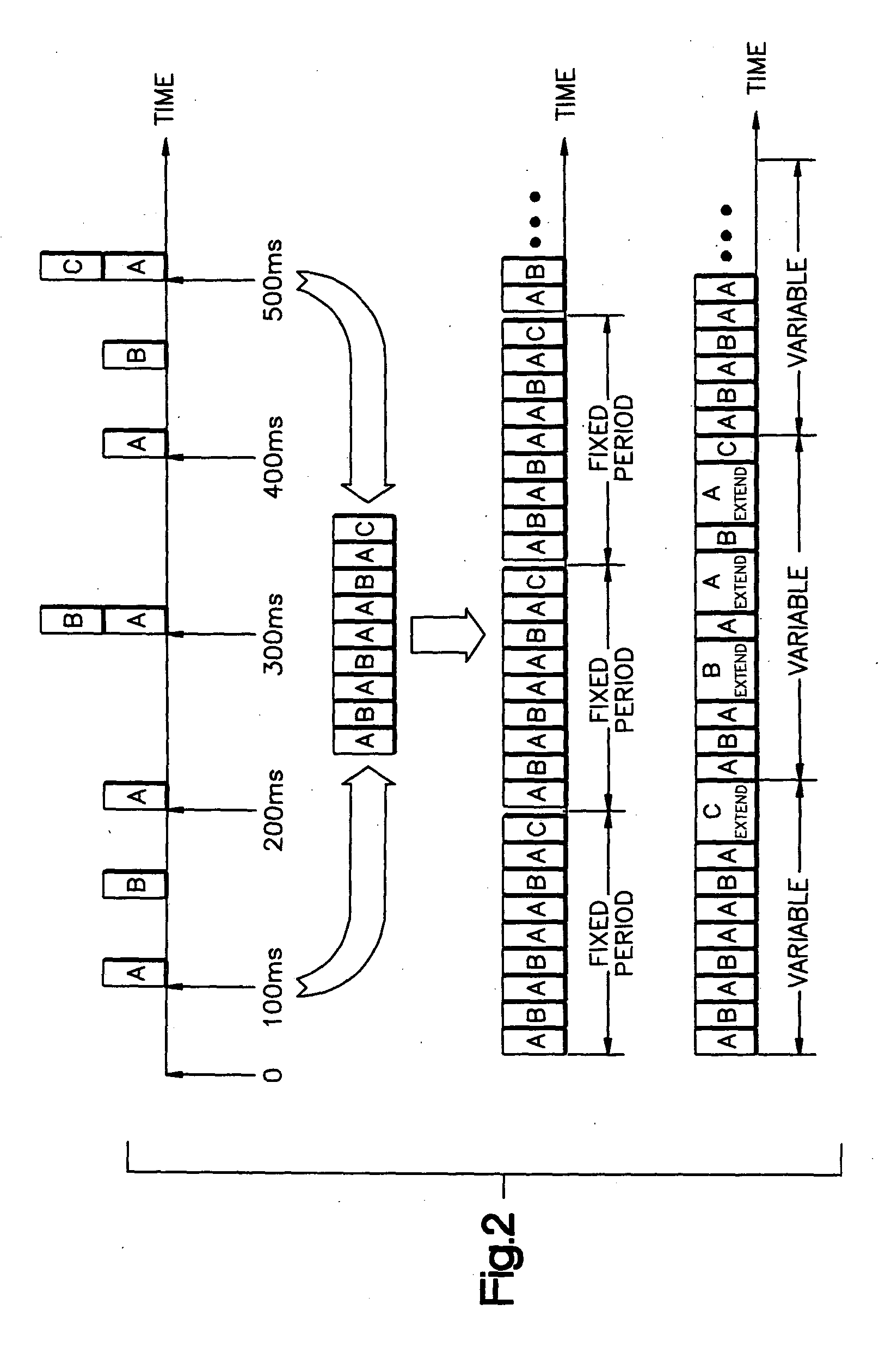System for estimating receiver utilization
a receiver utilization and receiver technology, applied in the field of signal processing, can solve the problems of large delays and inability to control the utilization estimate update ra
- Summary
- Abstract
- Description
- Claims
- Application Information
AI Technical Summary
Benefits of technology
Problems solved by technology
Method used
Image
Examples
Embodiment Construction
[0016] Electronic support measure (ESM) receiver systems typically are ground based, airborne, or sea based (surface or sub-surface platforms) systems that passively detect threat signals of interest, typically radar and communication signals. An ESM system identifies, classifies, and prioritizes detected signals for display to an operator or crew. The goal is to provide the crew with a tactical picture, or “situational awareness”, of the electromagnetic environment around them, such that the crew may react and counter any threats (e.g., maneuver, apply counter measure, attack, etc.). Since signal detection is passive (only receiving), an ESM receiver cannot be detected (i.e., an operator of a threat does not know that the ESM is in operation or that the threat has been detected, identified, and possibly located, etc.).
[0017] Although there are many variations, a typical ESM receiver system 10, as seen in FIG. 1, consists of an antenna array 20, low noise preamplifier 30, antenna c...
PUM
 Login to View More
Login to View More Abstract
Description
Claims
Application Information
 Login to View More
Login to View More - R&D
- Intellectual Property
- Life Sciences
- Materials
- Tech Scout
- Unparalleled Data Quality
- Higher Quality Content
- 60% Fewer Hallucinations
Browse by: Latest US Patents, China's latest patents, Technical Efficacy Thesaurus, Application Domain, Technology Topic, Popular Technical Reports.
© 2025 PatSnap. All rights reserved.Legal|Privacy policy|Modern Slavery Act Transparency Statement|Sitemap|About US| Contact US: help@patsnap.com



